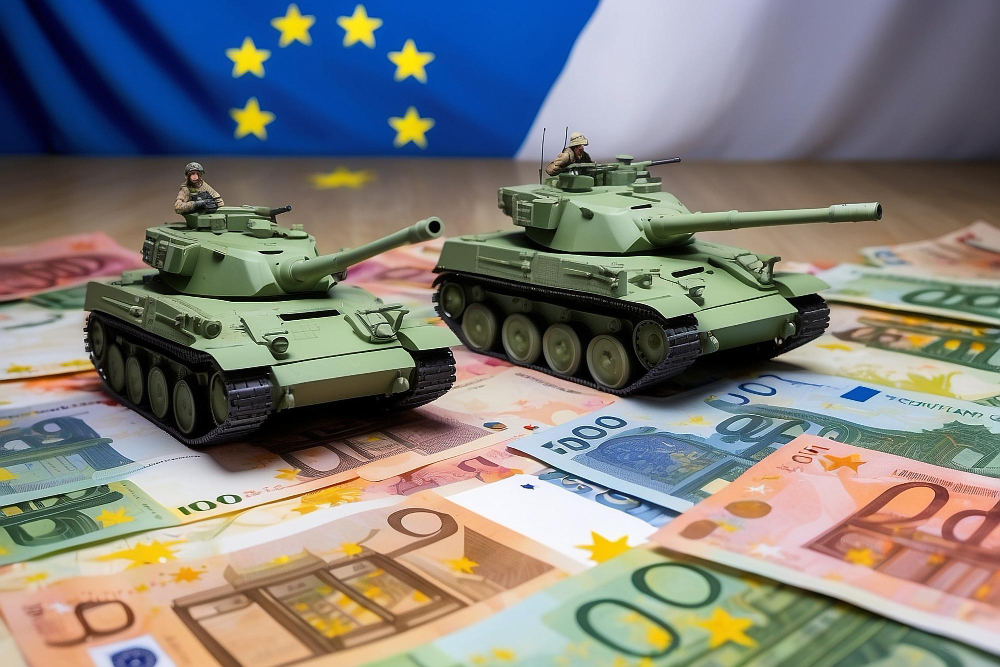Russia’s full-scale invasion of Ukraine upended European security. The war shows no sign of winding down, and the threat of Russian aggression is likely to endure even if the conflict ends. As Americans head to the polls to elect a new President, Europeans also fret about Washington’s weakening commitment to their defence. A Trump presidency threatens to weaken NATO and undermine deterrence, but even if Kamala Harris wins, Europeans will need to do more for their own defence, as the US will have to devote additional resources to countering China’s military build-up in Asia.
The proliferation of threats has led Europeans to raise their defence budgets substantially in recent years. As can be seen in Chart 1, some EU member-states are rapidly ramping up defence spending. Sixteen of them are due to spend over 2 per cent of GDP on defence this year. However, the under-investments in defence over the past three decades mean that it will take many years to fill the capability gaps that Europeans face in a range of areas from ammunition to precision-strike weapons. According to Commission President Ursula von der Leyen, the EU needs €500 billion in additional defence investment in the coming decade.
At the same time, there is a growing emphasis on spending in a more co-ordinated way, to improve the interoperability of military equipment and address the fragmentation of Europe’s defence industrial base, which remains largely organised along national lines and therefore hinders economies of scale. European defence innovation is also lacking: as the recent report by former Italian prime minister Mario Draghi highlights, EU members spent only 4.5 per cent of their defence budgets on R&D, totalling $11.8 billion, while the US spent $138.9 billion in 2023, amounting to 16 per cent of its $847 billion budget.
Funding European defence is a major challenge. Private financing of defence is scarce and the sector has long suffered from a poor image amongst investors, although the tide may be turning. Valuations of publicly-traded European defence companies, as measured by an index of aerospace and defence stocks, have approximately doubled since February 2022, far outstripping the performance of the broader European market. But these valuations, and the availability of private credit for defence more generally, will be contingent on demand for defence capabilities, which will always remain driven by governments.
Public financing is therefore essential to boost the EU’s defence capabilities. But in many member-states, it is unclear whether political consensus for raising defence budgets in inflation-adjusted terms will be sustained in the future. Voters are unlikely to support higher defence expenditures if these are perceived to come at the expense of higher taxes or lower spending on other priorities. Faced with these challenges, European policy-makers are looking for new financial instruments to enhance their defences.
One proposal is the creation of EU defence bonds. Ever since the Union’s pandemic recovery fund made large-scale common EU borrowing a reality, policy-makers have often looked to such an instrument as a solution for a range of problems. But defence is exceptionally intertwined with member-states’ national sovereignty, and the EU’s role in defence is still embryonic.
This paper explores the case for defence bonds and the potential models for their design, as well as the challenges that must be addressed if they are to become a viable tool in the EU’s security strategy.
About the authors:
Luigi Scazzieri is a senior research fellow at the Centre for European Reform.
Sander Tordoir is chief economist at the Centre for European Reform.


